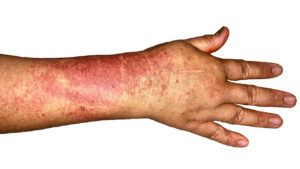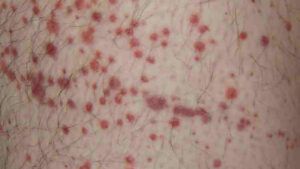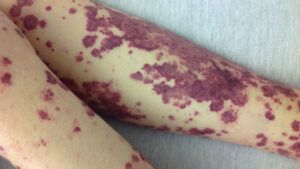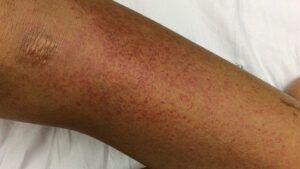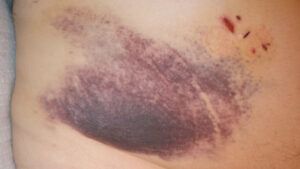Churg-Strauss syndrome, or eosinophilic granulomatosis with polyangiitis (EGPA), is a rare condition that causes vasculitis, meaning it restricts blood flow. This restriction of blood flow affects multiple organs, especially the lungs.
Churg-Strauss syndrome, or EGPA, is a rare condition affecting 2.4 out of every million people annually.
It affects the blood vessels, restricting blood from flowing to the organs and tissues. Churg-Strauss syndrome can affect multiple organs, but it mostly affects the lungs.

Pathologists Jacob Churg and Lotte Strauss first described the condition based on their findings from autopsies in
As a result, medical experts changed the condition’s name from Churg-Strauss syndrome to EGPA in 2010. However, many people still call the condition by its common name, which we use for this article.
Churg-Strauss syndrome is a variant of a group of conditions that includes asthma and rhinosinusitis.
Churg-Strauss syndrome has three main characteristics:
- Hypereosinophilia: This is when a certain type of white blood cells, called eosinophils, cluster within the blood vessels and tissues.
- Vasculitis: This involves inflammation of the blood vessels, which restricts blood flow.
- Granulomatosis: This process happens as a result of vasculitis, which causes inflammatory nodular lesions called granulomas to form.
The lack of blood flow can damage multiple organs, but it particularly affects the lungs. Without treatment, this can have severe effects on the body.
Other names
People may also use these other terms for the condition:
- Churg-Strauss vasculitis
- allergic granulomatosis
- allergic granulomatosis and angiitis
- allergic angiitis and granulomatosis
Because Churg-Strauss syndrome can target different organs within the body, symptoms can vary widely from person to person. The condition often has three distinct phases, though this does not happen in every case.
Many symptoms vary, but asthma commonly occurs, affecting
Around half of people also experience skin conditions,
- purplish skin lesions, such as purpura, petechiae, and ecchymosis
- skin nodules, commonly on the scalp or the elbows or other extremities
Phase one symptoms
In phase one, nonspecific symptoms can
- malaise
- fever
- weight loss
- migrating polyarthralgia, which causes joint pain
Additionally, people can experience a form of asthma that does not respond to conventional treatment methods. This typically develops before other symptoms.
People may also experience upper respiratory symptoms in phase one.
Phase two symptoms
Phase two is when the eosinophils cluster,
Phase three symptoms
Phase three involves the onset of vasculitis, which generally causes neurological symptoms. Vasculitis may not develop until
Common symptoms include pain, tingling, and numbness in the extremities, such as the hands and feet. This eventually leads to weakness and muscle wasting in those areas.
Research has not yet identified a specific cause for Churg-Strauss syndrome, but the following types of factors likely play a role:
- genetic
- immunological
- environmental
Though the triggers may be unclear, scientists believe the condition occurs as an autoimmune disease, meaning that the immune system attacks healthy cells.
If people have access to the right facilities, Churg-Strauss syndrome is treatable. However, without proper treatment, life threatening complications can develop. These complications can vary depending on which organ systems the condition damages.
For example, if the condition affects the neurological system, it can cause bleeding in the brain or restrict blood from flowing toward the brain, causing a stroke.
If Churg-Strauss syndrome affects the blood vessels that supply the kidneys, it can cause abnormalities that lead to kidney failure.
However, Churg-Strauss syndrome mostly affects the lungs. This can make breathing challenging, resulting in a lack of oxygen supply to the rest of the body. Despite the availability of treatment, asthma can persist after a person recovers from Churg-Strauss syndrome.
People of any age or sex may develop Churg-Strauss syndrome. The average age of onset is
Churg-Strauss syndrome has a 20–30% chance of recurring. Although there are no real risk factors for developing Churg-Strauss syndrome initially, some factors can increase the chances of a relapse, such as:
- recurring antineutrophilic cytoplasmic antibody (ANCA) positivity, which indicates autoimmune vasculitis
- a rise in ANCA levels
- gastrointestinal tract (GI) problems
- a sudden increase in eosinophil count
The following conditions can appear to be similar to Churg-Strauss syndrome:
- Wegener’s granulomatosis: This is similar but mostly affects the sinuses.
- Polyarteritis nodosa: This causes the blood vessels to weaken and degenerate.
- Guillain-Barré syndrome: This condition often leads to paralysis.
Comparing signs and symptoms across related conditions can help doctors produce a differential diagnosis.
Steps for diagnosing Churg-Strauss syndrome include:
- clinical evaluation
- characteristic physical findings
- specialized tests
Specialized tests may involve biopsy and microscopic examination of lung tissue samples.
To receive a diagnosis of Churg-Strauss syndrome, a person must meet at least four of the following six criteria:
- asthma
- eosinophilia levels of at least 10% within circulating blood
- mono- or polyneuropathy (when peripheral nerves are damaged)
- nonfixed pulmonary infiltrates (when substances such as blood or pus are present in the lungs)
- paranasal sinus abnormalities, such as soft tissue masses like polyps
- extravascular eosinophilia (a high number of white blood cells outside the vascular system)
Treatment strategies will vary slightly to meet individual needs, but
Corticosteroids can decrease the prevalence of eosinophil white blood cells in the blood and tissues and reduce the amount of time eosinophils last in tissues outside the blood vessels.
Immunosuppressants can also reduce eosinophil serum levels in the blood, reducing disease activity.
Churg-Strauss syndrome responds
The condition can recur, with relapse occurring in
Here are some answers to frequently asked questions about Churg-Strauss syndrome.
Is Churg-Strauss syndrome hereditary?
More studies are necessary to determine the exact cause of Churg-Strauss syndrome, but many researchers believe genetics play a role in the condition.
Is Churg-Strauss syndrome fatal?
Without treatment, Churg-Strauss syndrome can be fatal. The risk of mortality varies depending on which organs the condition affects.
The
Churg-Strauss syndrome, or EGPA, is a rare condition that affects the blood vessels through a process called vasculitis. It can restrict the blood from flowing to the organs and body tissues. It may affect different organs but most often affects the lungs.
Symptoms vary from person to person, but asthma is a common symptom that affects most people with the condition.
Churg-Strauss syndrome typically responds well to treatment. However, it can be fatal without treatment, depending on how it affects the body.

